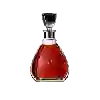
Winery Grain de LuneBanyuls
This wine generally goes well with beef, mature and hard cheese or spicy food.
Food and wine pairings with Banyuls
Pairings that work perfectly with Banyuls
Original food and wine pairings with Banyuls
The Banyuls of Winery Grain de Lune matches generally quite well with dishes of beef, spicy food or mature and hard cheese such as recipes of harira de mamie (moroccan soup), korma chicken (india) or quiche with comté cheese and cured ham.
Details and technical informations about Winery Grain de Lune's Banyuls.
Discover the grape variety: Sauvignonasse
Would be the friulano - before 2007 called tocai friulano - from Veneto in Italy. It would be a distant relative of furmint and Jean-Michel Boursiquot (2019) states that it is the father or mother of chenin blanc. However, Sauvignonasse has nothing to do with Sauvignon Blanc, which it was once mixed with in the Sauternes region. It can be found in Italy, Chile, Argentina, Russia, ... practically more multiplied in France.
Informations about the Winery Grain de Lune
The Winery Grain de Lune is one of wineries to follow in Banyuls.. It offers 9 wines for sale in the of Banyuls to come and discover on site or to buy online.
The wine region of Banyuls
Banyuls wines come from the South-eastern Part of Roussillon, in the south of France, in the lower Pyrenees, a few kilometres from the Spanish border. These naturally Sweet wines are consumed both as an aperitif and as a dessert. They come in a wide range of hues, from GoldenGreen (Banyuls Blanc) to Amber (Banyuls Ambré) to the intense garnet of the standard Banyuls Rouge. Unusually among the natural sweet wines of France, all Banyuls wines are made primarily from Grenache grapes of various colors.
The wine region of Languedoc-Roussillon
Languedoc (formerly Coteaux du Languedoc) is a key appellation used in the Languedoc-Roussillon wine region of southern France. It covers Dry table wines of all three colors (red, white and rosé) from the entire region, but leaves Sweet and Sparkling wines to other more specialized appellations. About 75% of all Languedoc wines are red, with the remaining 25% split roughly down the middle between whites and rosés. The appellation covers most of the Languedoc region and almost a third of all the vineyards in France.
The word of the wine: Tranquil (wine)
Refers to a non-sparkling wine.














